| Panzer Grenadier (Modern)
Cold War: Fulda Gap 1968
First Look
By Mike Bennighof, Ph.D.
October 2023
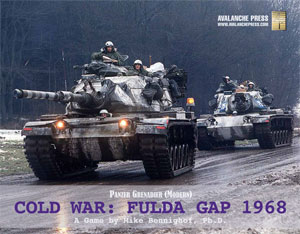 When we released the first Panzer Grenadier (Modern) game, 1967: Sword of Israel, we didn’t have another game in the pipeline. That was a publishing mistake, and we’re finally correcting it with Cold War: Fulda Gap 1968. When we released the first Panzer Grenadier (Modern) game, 1967: Sword of Israel, we didn’t have another game in the pipeline. That was a publishing mistake, and we’re finally correcting it with Cold War: Fulda Gap 1968.
Fulda Gap 1968 is the same size as most games in its Panzer Grenadier sister series: four geomorphic maps, 517 die-cut and silky-smooth playing pieces and 40 scenarios (split into eight chapters, each with a battle game to tie them together).
Fulda Gap 1968 is based on battles that never happened, but they’re probably the most-studied battles that never happened. The Fulda Gap represents a break in the mountains along the old frontier between East and West Germany, the Knüllgebirge to the north and the Vogelberg to the south. While these mountains aren’t the Alps, they’re rough enough to make it difficult to advance mechanized formations through them.
 In case the Cold War turned hot, the Group of Soviet Forces in Germany planned to send its Eighth Guards Army through the Fulda Gap, which provided a route aimed directly at Frankfurt am Main, the linchpin of the U.S. position in Europe, home of Rhein-Main Air Base, and the financial center of West Germany. No Warsaw Pact allied formations would be entrusted with this mission. In case the Cold War turned hot, the Group of Soviet Forces in Germany planned to send its Eighth Guards Army through the Fulda Gap, which provided a route aimed directly at Frankfurt am Main, the linchpin of the U.S. position in Europe, home of Rhein-Main Air Base, and the financial center of West Germany. No Warsaw Pact allied formations would be entrusted with this mission.
To defend the Gap, NATO had the West German III Corps on the left and the American V Corps on the right, with a screen of armored cavalry right up on the border. NATO’s view on just where to defend the Gap varied through the years between forward defense and a defense in depth; by 1968 the doctrine of forward defense had been accepted and a modified plan would be adopted the next year. The depth of the “covering force area” varied at different points along the border. At Fulda it was at its narrowest. Here, the Bundeswehr and U.S. Army would fight almost on the edge of the Iron Curtain.
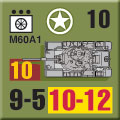 That allows for a lot of game possibilities. NATO forces include two armored divisions and two mechanized infantry divisions (one each from the Bundeswehr and the U.S. Army) while the Soviets initially have one tank division and three motor rifle divisions, with plenty more following behind them. That allows for a lot of game possibilities. NATO forces include two armored divisions and two mechanized infantry divisions (one each from the Bundeswehr and the U.S. Army) while the Soviets initially have one tank division and three motor rifle divisions, with plenty more following behind them.
Our story takes place in August and September 1968, immediately following Operation Danube, the Warsaw Pact invasion of Czechoslovakia. Some feared at the time that the Soviet moves into their unruly satellite would be used to mask an attack on West Germany while the United States was distracted by events in Vietnam and civil unrest at home.
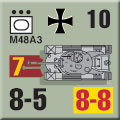 NATO defense plans in 1968 still included nuclear mines dug in under the Fulda Gap, backed by an array of tactical nuclear weapons. The M29 Davey Crockett nuclear-tipped rocket, with a blast radius only slightly less than its range, had been removed from the theater a year earlier despite former West German Defense Minister Franz Josef Strauss’ insane notion of replacing the Bundeswehr’s artillery with the self-destructive little missiles. NATO defense plans in 1968 still included nuclear mines dug in under the Fulda Gap, backed by an array of tactical nuclear weapons. The M29 Davey Crockett nuclear-tipped rocket, with a blast radius only slightly less than its range, had been removed from the theater a year earlier despite former West German Defense Minister Franz Josef Strauss’ insane notion of replacing the Bundeswehr’s artillery with the self-destructive little missiles.
Since I get to write the history, it’s one where the fighting is purely conventional. That still leaves a lot of room for death and destruction; both sides are wielding powerful weapons with a great deal of air support available for whoever happens to gain air superiority at the moment. The story has the invasion proceeding as planners expected, with tank-heavy Soviet forces first engaging the armored cavalry screen and then matching up with the heavy forces.
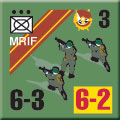 I chose 1968 as the game’s time frame so I could use Operation Danube as the story’s background hook, but it also represents a moment when the U.S. Army and its German allies had finally received the upgraded equipment and organizations that began under the Kennedy administration. Defense policy once again focused on conventional warfare, and the Pentomic division designed for the nuclear battlefield gave way to the more conventional ROAD organization. Weapons like the Davey Crockett disappeared; no longer would 2nd lieutenants have the option to ignite a global thermonuclear war. In their place came the M60 main battle tank and M113 armored personnel carrier. Likewise, the Soviets brought on the T-62 tank and the BTR-60 armored personnel carrier and had just begun to issue the BMP-1 infantry fighting vehicle. I chose 1968 as the game’s time frame so I could use Operation Danube as the story’s background hook, but it also represents a moment when the U.S. Army and its German allies had finally received the upgraded equipment and organizations that began under the Kennedy administration. Defense policy once again focused on conventional warfare, and the Pentomic division designed for the nuclear battlefield gave way to the more conventional ROAD organization. Weapons like the Davey Crockett disappeared; no longer would 2nd lieutenants have the option to ignite a global thermonuclear war. In their place came the M60 main battle tank and M113 armored personnel carrier. Likewise, the Soviets brought on the T-62 tank and the BTR-60 armored personnel carrier and had just begun to issue the BMP-1 infantry fighting vehicle.
 The age of the missile had also begun. While the Sovits had not yet supplied the 9M14 Malyutka anti-tank missile (more widely known by its NATO codename “AT-3 Sagger”) to the Arab armies that fought the 1967 Six-Day War, their own troops had plenty of them. The United States in turn purchased the French ENTAC missile for its own anti-tank platoons as a stopgap until the TOW became available in the early 1970’s. The age of the missile had also begun. While the Sovits had not yet supplied the 9M14 Malyutka anti-tank missile (more widely known by its NATO codename “AT-3 Sagger”) to the Arab armies that fought the 1967 Six-Day War, their own troops had plenty of them. The United States in turn purchased the French ENTAC missile for its own anti-tank platoons as a stopgap until the TOW became available in the early 1970’s.
Sword of Israel had tank battles - some very large tank battles - but even though the Arabs fielded some very fine tanks (T-54 and T-55 models for the Egyptians and Syrians, M48’s for the Jordanians), the Israelis had just about all of the advantages: leadership, morale, artillery, initiative and airpower are almost always on their side in the game’s scenarios. The Arab player has a challenging position trying to overcome that, and it’s very satisfying to lead such out-matched troops to victory. But that still doesn’t yield the more-or-less symmetrical situation that I wanted to provide for players.
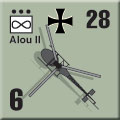 In Fulda Gap 1968, the forces are evenly matched, allowing straight-up armored brawls between two well-armed, well-trained and well-led forces. And since the conflict defied expectations by never actually happening, I got to craft the flow of the story to provide the scenarios I wanted to see: a mix of armored battles, set-piece assaults, infantry brawls and delaying actions with both sides getting the chance to attack and defend. In Fulda Gap 1968, the forces are evenly matched, allowing straight-up armored brawls between two well-armed, well-trained and well-led forces. And since the conflict defied expectations by never actually happening, I got to craft the flow of the story to provide the scenarios I wanted to see: a mix of armored battles, set-piece assaults, infantry brawls and delaying actions with both sides getting the chance to attack and defend.
By setting the story a little more than a year after the Six-Day War, a great deal of the equipment is familiar. The M48 is back in German and American colors, but it would not be upgraded with the L7 105mm gun for several more years, once the lessons of 1967 had been absorbed. And the M113, a limited number of which appear in the Jordanian inventory in 1967, is in widespread American use. The Soviets have the T-54 and T-55 medium tanks and the awesome 130mm artillery piece.
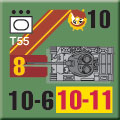 And then there are the new weapons. The Americans field their M60 main battle tank and the West Germans the Leopard 1 and their own array of locally-produced fighting vehicles. The Soviets have the T-62 tank, which had not been sold to the Arabs in 1967, their modern infantry fighting vehicles and weapons like the Sagger and the SPG-9 Spear recoilless rifle. There are helicopters and fast-movers on both sides. It’s a rather dangerous battlefield. And then there are the new weapons. The Americans field their M60 main battle tank and the West Germans the Leopard 1 and their own array of locally-produced fighting vehicles. The Soviets have the T-62 tank, which had not been sold to the Arabs in 1967, their modern infantry fighting vehicles and weapons like the Sagger and the SPG-9 Spear recoilless rifle. There are helicopters and fast-movers on both sides. It’s a rather dangerous battlefield.
I didn’t design Sword of Israel, and I think that kept me from seeing this game as one I needed to create. I’ve had a great deal of fun with it, and it’s one we should have made long ago.
 Click here to join the Gold Club Click here to join the Gold Club
See your Gold Club Insider newsletter for ordering information.
Sign up for our newsletter right here. Your info will never be sold or transferred; we'll just use it to update you on new games and new offers.
Mike Bennighof is president of Avalanche Press and holds a doctorate in history from Emory University. A Fulbright Scholar and NASA Journalist in Space finalist, he has published a great many books, games and articles on historical subjects; people are saying that some of them are actually good.
He lives in Birmingham, Alabama with his wife, three children, and new puppy. He misses his lizard-hunting Iron Dog, Leopold.
Want to keep Daily Content free of third-party ads? You can send us some love (and cash) through this link right here.
|
